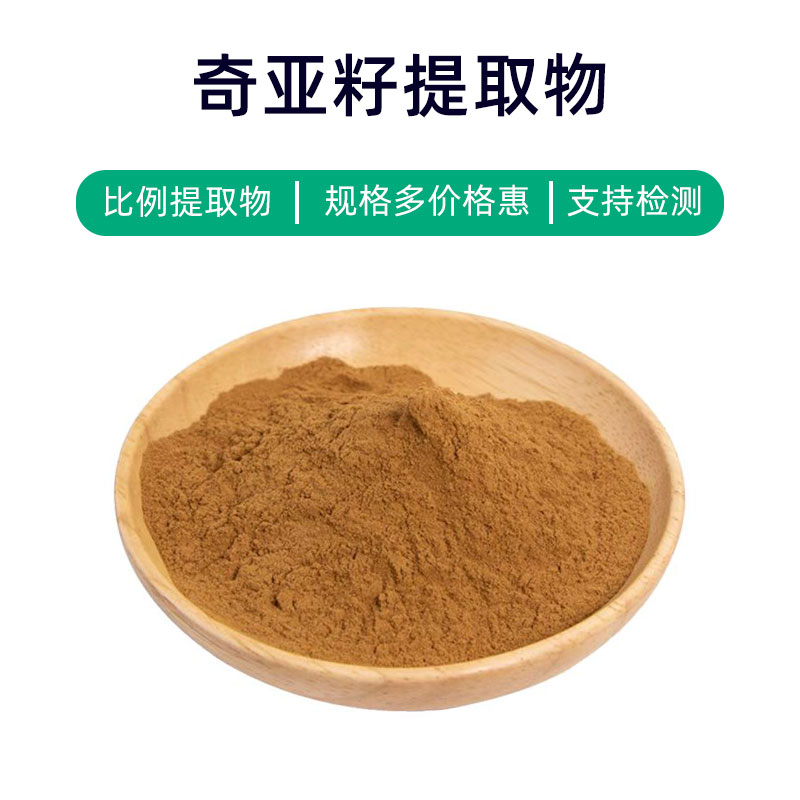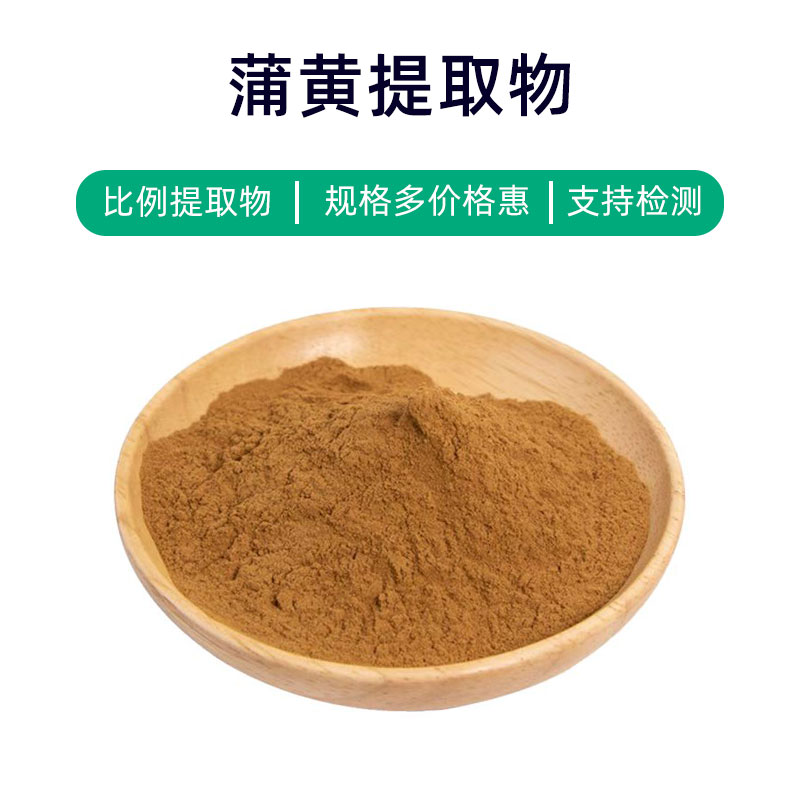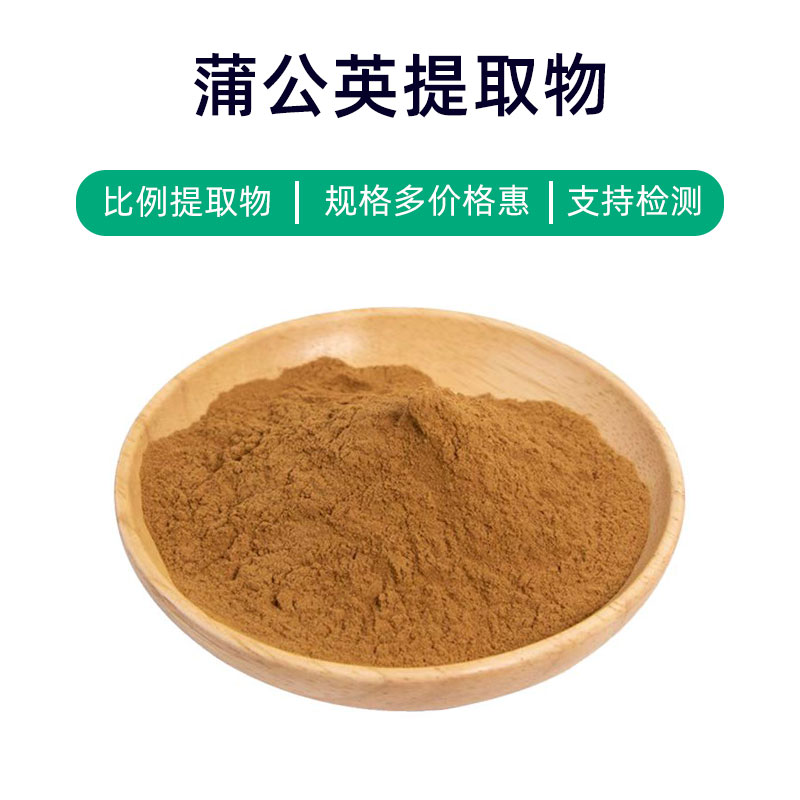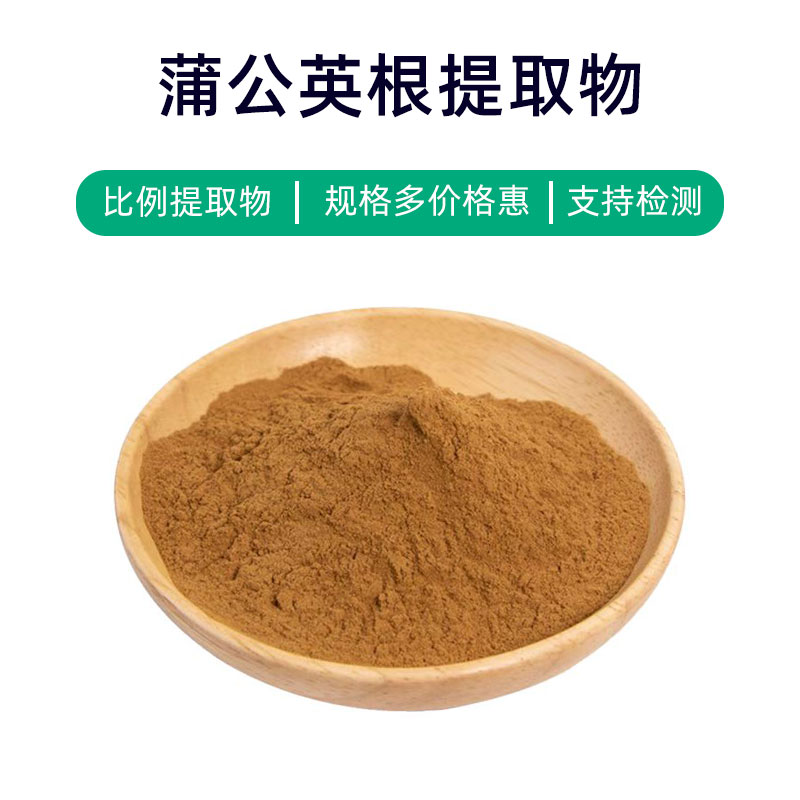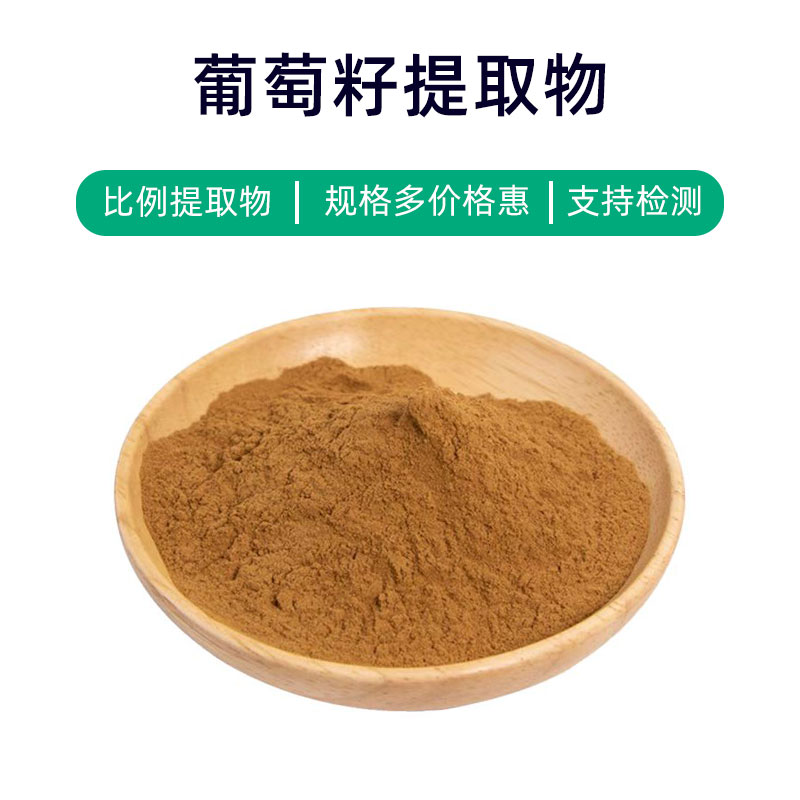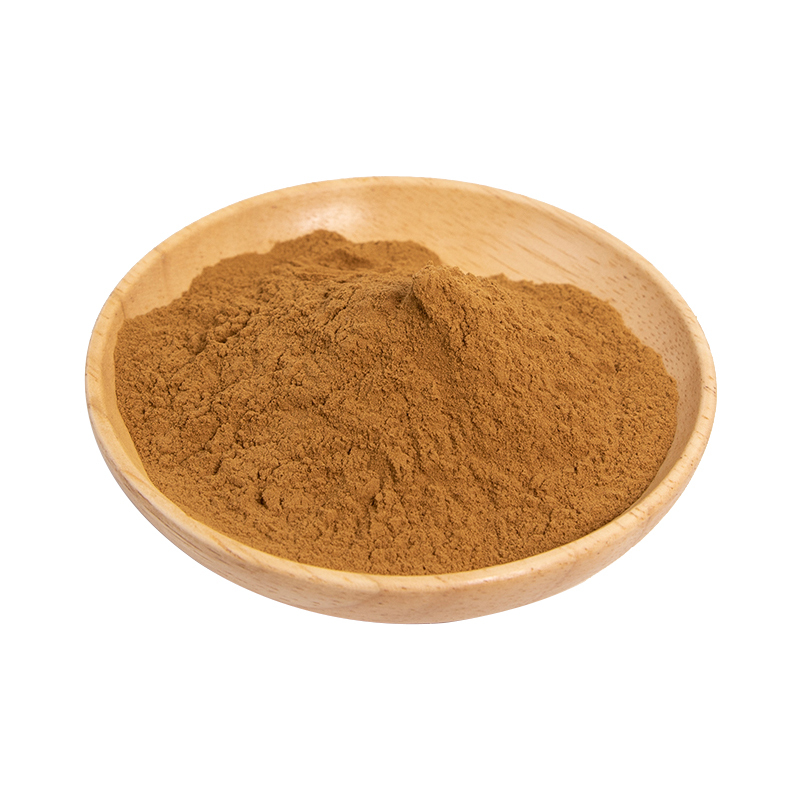Kudzu Flower Extract Product Introduction
Kudzu flower extract is a natural plant extract derived from the flowers of the Kudzu plant (Pueraria lobata). Its main ingredients include puerarin, isoflavones, flavonoids, and polyphenols, which provide a variety of benefits.
First, Kudzu flower extract has antioxidant properties that can eliminate free radicals, protecting cells from oxidative damage. Secondly, it exhibits anti-inflammatory and antibacterial properties, helping to reduce inflammatory responses and prevent bacterial infections. Additionally, Kudzu flower extract has been found to have beauty-enhancing effects, promoting skin metabolism, reducing wrinkles, and increasing skin elasticity, leaving the skin softer and smoother.
In terms of applications, Kudzu flower extract is extensively used in pharmaceuticals, health products, and cosmetics. In the pharmaceutical field, it is commonly used in the formulation of drugs that have antioxidant, anti-inflammatory, and antibacterial properties to treat inflammatory diseases and skin issues. In the health supplement sector, it serves as a natural antioxidant added to health products to boost immunity and improve skin texture. In cosmetics, Kudzu flower extract is often included in skincare products for its moisturizing, anti-aging, and whitening effects, suitable for all skin types.
Overall, as a natural plant extract, Kudzu flower extract possesses multiple benefits, including antioxidant, anti-inflammatory, and beauty-enhancing effects, and is widely applied across pharmaceuticals, health products, and cosmetics, providing strong support for health and beauty.
Kudzu Flower Extract Production Process
The production process of Kudzu flower extract generally includes the following main steps:
- Raw Material Collection and Processing: Fresh Kudzu flowers are collected as raw material for extraction. The collected flowers are washed and undergo preliminary processing to remove impurities and dirt.
- Extraction Process: The extraction process is a key step in obtaining the Kudzu flower extract. Common extraction methods include water extraction, ethanol extraction, and supercritical fluid extraction. Among these, the water extraction method is relatively common, using water immersion or distillation to extract active ingredients from the flowers.
- Concentration and Refinement: The obtained extract paste undergoes concentration and purification to remove excess solvents and impurities, yielding a pure extract. This is typically achieved through distillation, condensation, and filtration.
- Drying and Grinding: The refined extract needs to be dried to remove moisture and obtain a dry product. Afterward, the dried extract is ground or milled to achieve the desired particle size and granularity.
- Packaging and Storage: Finally, the ground Kudzu flower extract is packaged, usually in moisture-proof packaging to prevent oxidation. During storage, it is important to avoid direct sunlight and high temperatures, maintaining a dry and ventilated environment to extend the shelf life and stability of the product.
The entire production process requires strict control over the conditions and parameters of each step to ensure the quality and stability of the extract. Additionally, adjustments and optimizations may be made to the production process based on the specific requirements and uses of the product.
Kudzu Flower Extract Effects and Side Effects
Kudzu flower extract, as a natural plant extract, offers several benefits and effects, primarily including the following aspects:
- Antioxidant Effects: It is rich in flavonoids such as puerarin and isoflavones, which provide significant antioxidant effects, eliminating free radicals, slowing oxidation reactions, and protecting cells from oxidative damage.
- Anti-inflammatory and Anti-inflammatory Effects: The flavonoids in Kudzu flower extract exhibit anti-inflammatory activity, inhibiting the release of inflammatory mediators, reducing inflammatory responses, and having therapeutic benefits for inflammatory diseases.
- Antibacterial Effects: Studies suggest that Kudzu flower extract has certain antibacterial properties, inhibiting the growth of various bacteria and fungi, providing therapeutic effects for bacterial and fungal infections.
- Cardiovascular Protective Effects: The flavonoids in Kudzu flower extract can dilate blood vessels, lower blood pressure, and reduce blood lipids, improving cardiovascular function and preventing cardiovascular diseases.
- Anti-tumor Effects: Some studies indicate that the active ingredients in Kudzu flower extract have anti-tumor activities that can inhibit the proliferation and metastasis of tumor cells, playing a role in the prevention and adjunctive treatment of tumors.
- Improvement of Immune Function: The active components in Kudzu flower extract can regulate immune system functions, enhance the body’s resistance, and prevent infections and diseases.
Kudzu flower extract is generally safe, but individual differences and dosage guidelines should still be observed. In certain cases, allergic reactions or adverse effects may occur, such as gastrointestinal discomfort, dizziness, or rashes from excessive use. Therefore, when using Kudzu flower extract, it is advisable to follow medical advice or product instructions to avoid unnecessary risks.
Kudzu Flower Extract Application Scenarios and Dosage
As a natural plant extract, Kudzu flower extract has various application scenarios in pharmaceuticals, food, and cosmetics. Here are its main applications and recommended dosages:
- Pharmaceutical Applications:
- Anti-inflammatory Pain Relief: Kudzu flower extract can be used to create anti-inflammatory and pain-relieving medications suitable for treating rheumatoid arthritis and osteoarthritis. Typical dosage is 200-400 mg taken orally per day, divided into 2-3 doses.
- Cardiovascular Protection: Kudzu flower extract may be used in formulating cardiovascular protection medications, serving as an adjunct treatment for hypertension and hyperlipidemia. Standard dosage is 200-400 mg taken orally per day, in 2-3 doses.
- Anti-tumor: Kudzu flower extract can be used to formulate anti-tumor medications for auxiliary treatment of breast cancer, endometrial cancer, etc. Dosage varies per individual and should be used under medical guidance.
- Food Applications:
- Flavor Enhancement: Kudzu flower extract can be used as a food additive for flavor enhancement, suitable for seasonings and beverages. Usage typically complies with food safety standards.
- Health Supplements: As an ingredient in health supplements, Kudzu flower extract can be used to prepare functional health products aimed at regulating blood lipids, improving sleep, and enhancing immunity. Common dosage is 200-400 mg taken orally per day, divided into 2-3 doses.
- Cosmetic Applications:
- Skincare Products: With its rich flavonoid content and antioxidant and anti-inflammatory properties, Kudzu flower extract is used in skincare formulations to reduce skin inflammation and inhibit melanin deposition. The typical dosage is to add an appropriate amount to cosmetics, following product instructions.
- Hair Products: Kudzu flower extract has soothing and moisturizing effects on the scalp, making it suitable for hair care products like shampoos and conditioners, aiding in improving scalp health and hair quality. Dosage depends on product formulation, and it is advisable to follow instructions for use.
In summary, Kudzu flower extract has broad applications in pharmaceuticals, food, and cosmetics, but the appropriate dosage and usage should be determined based on the type of product, its purpose, and individual circumstances. It is recommended to use under the guidance of professionals and adhere to dosage suggestions in the product instructions to ensure safety and effectiveness.
Source Plant Introduction, Distribution, and Growth Environment of Kudzu Flower Extract
Kudzu flower extract comes from the kudzu plant (Pueraria lobata), which belongs to the legume family, also known as kudzu root or vine. Here is an introduction to the plant, its distribution, and growth environment:
- Plant Introduction:
- Kudzu (Pueraria lobata) is a perennial vine belonging to the legume family, characterized by its climbing nature with long, slender stems that typically grow attached to other plants or objects.
- The kudzu plant features unmistakable trifoliate leaves, large, palmate in shape, with silver-white venation. The flower season is in summer, producing blue-purple flowers that cluster in grape-like racemes.
- Distribution:
- Kudzu is primarily found in subtropical and temperate regions, including China, Japan, Korea, and Southeast Asia. In China, it is mainly distributed in the Yangtze River basin and southern areas such as Hunan, Hubei, and Sichuan provinces.
- Due to its strong cold resistance, kudzu is also cultivated in North America and Europe.
- Growth Environment:
- Kudzu prefers moist environments and is not very picky about soil types, showing strong adaptability. It commonly grows on hillsides, fields, forest edges, and roadside areas.
- It has a high light requirement and thrives in abundant sunlight, yet it can also adapt to partial shade.
- The optimal growing temperature is generally between 68-86°F (20-30°C), and while it is quite hardy against cold, extreme cold can impact its growth and flowering.
Kudzu flowers, as part of the kudzu plant, develop during the plant's growth cycle and are rich in various active ingredients, making them one of the important medicinal parts of the kudzu plant. Given their significant value in medicine, food, and cosmetics, responsible harvesting and cultivation of kudzu plants hold economic and research significance.
Processing and Storage of Kudzu Flower Extract
The processing of Kudzu flower extract mainly involves the following steps: First, fresh kudzu flowers are collected and undergo initial processing such as removing impurities and washing; then extraction processes are conducted, often using water extraction or supercritical fluid extraction methods; followed by filtering, concentrating, and drying procedures to yield the final Kudzu flower extract. For storage, the extract should be placed in a cool, dry area, avoiding direct sunlight and high temperatures to prevent quality degradation. It should be stored in sealed containers to avoid moisture and oxidation while also preventing cross-contamination. Regular quality checks should be conducted to ensure the extract is in good storage condition.
Monica Sun is a seasoned expert in the plant extraction industry with over a decade of experience in research and production. She specializes in the extraction and purification of plant active ingredients, focusing on driving innovation in natural product applications. Monica has participated in the development of multiple functional plant extracts, delivering high-value natural raw material solutions for the health food, pharmaceutical, and dietary supplement sectors.









